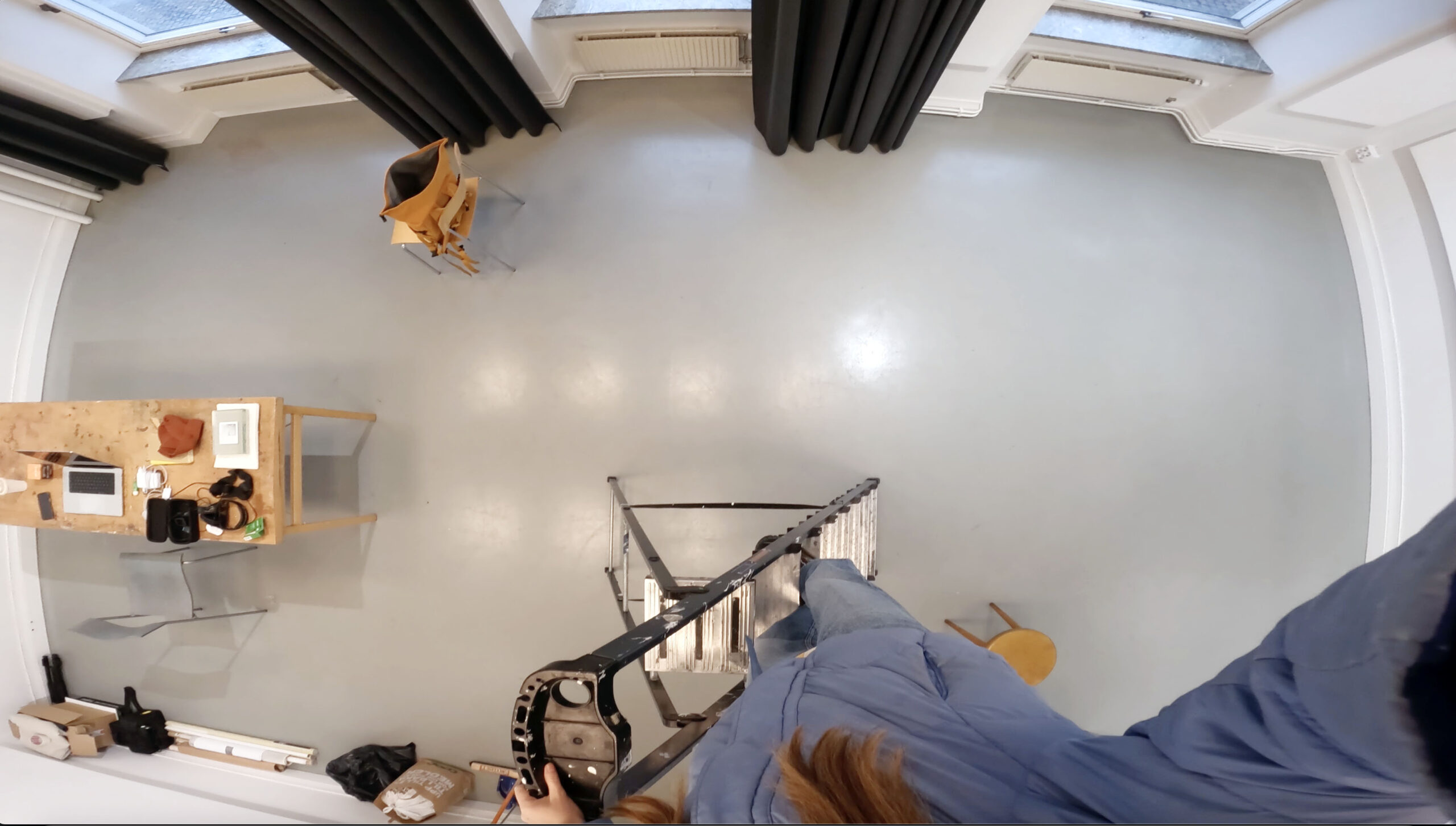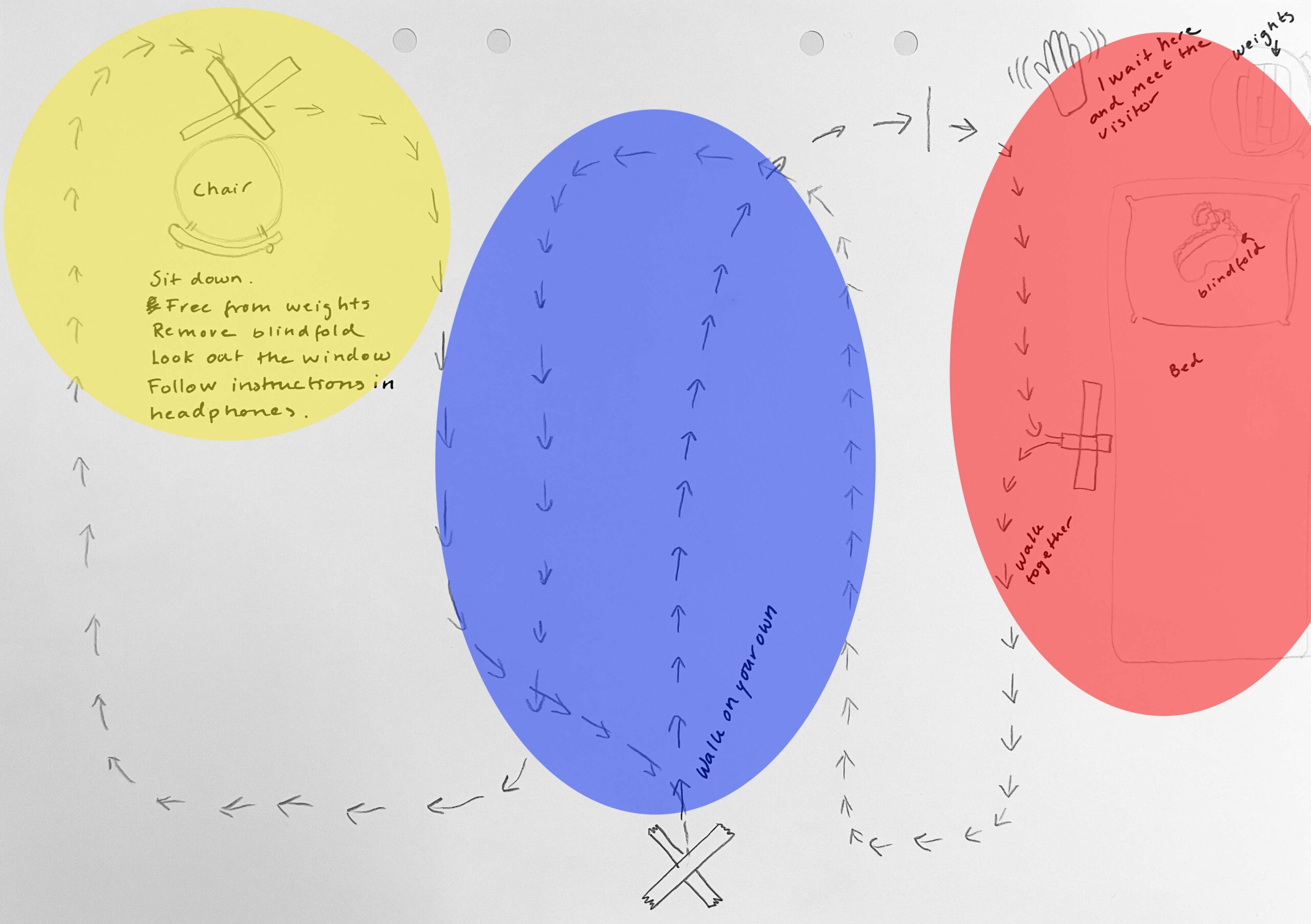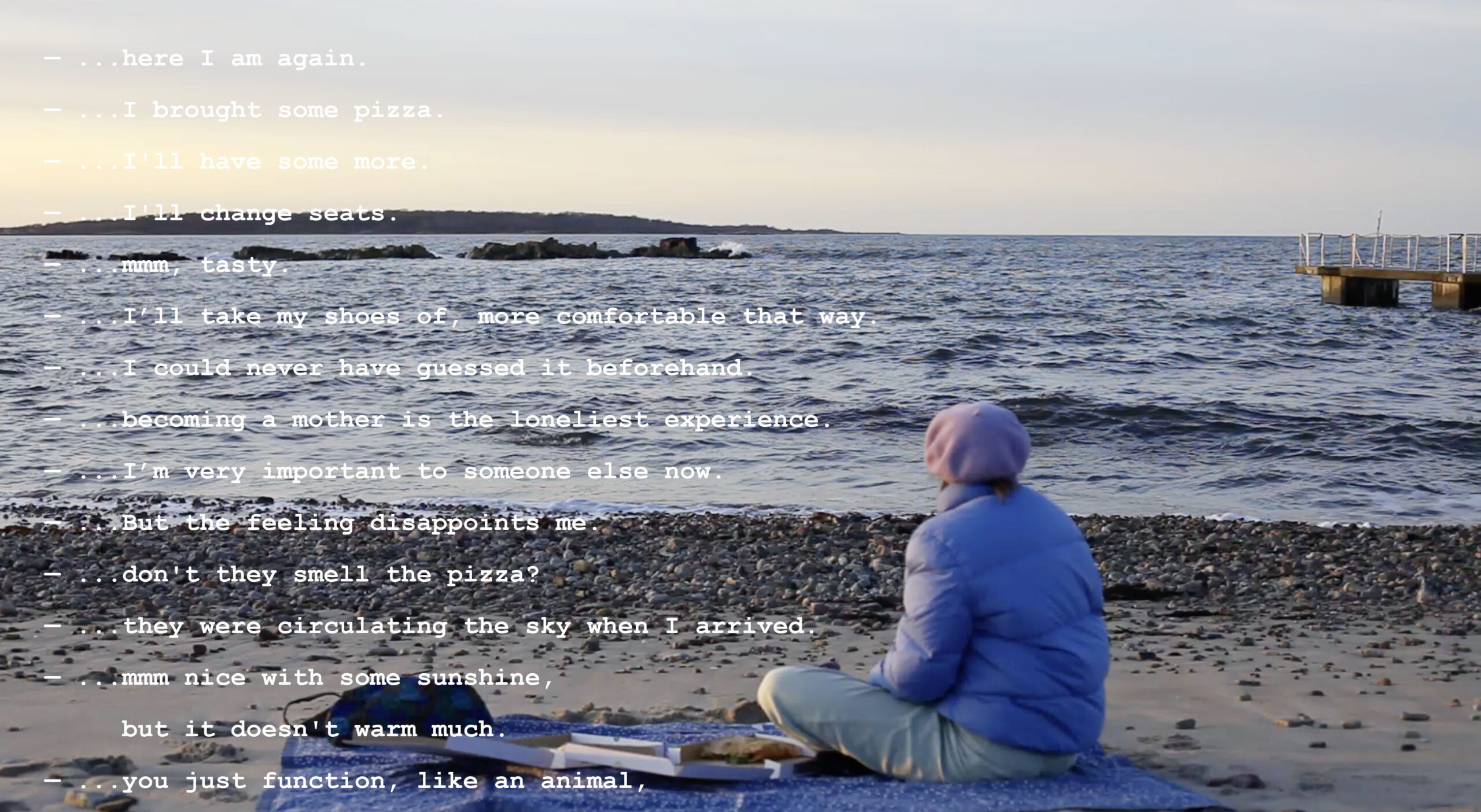


How to Document a Performance
Logbook
Day 1
10:13 Enter the project room. Pick up equipment: Go Pro camera, headset band and headphones. I tear this quote out of my notebook and pin it to the wall.
” At its heart, the document of a performance is not the work, and neither is it a document; in every case, it holds a position somewhere between the two, but there is no simple spectrum upon which a particular example can sit at a specific point. The relationship is far more complex and in fact resembles a matrix rather than a spectrum.”
11:21 Figure out how the camera works. Erase what is on the memory card.
12:33 Back to the notebook. How can a performance be documented to convey its essence? Does this matter, and for whom—artist or audience? If documentation falls short of replicating the live feeling, is its purpose merely to acknowledge the event? If documentation can immerse you in the performance, what defines the actual live event? Maybe it’s even possible to experience the performance solely through the documentation? Are performance and documentation separate entities or intertwined aspects of the same work?
14:30 Stare into the void, realize I forgot to eat lunch.
15:13 Project room, I manage to climb the ladder to try how much I would get of the roomlike installation from above. With the normal lens, not much, despite a roof height of at least 4 meters. With a wide angle, I get the whole room. It looks very distorted. I try to start the camera with the voice control function, but my voice doesn’t affect it at all. I realize my time for the day is up already.
Day 2
11:21 Back in the project room. Notes on possible ways of documenting a performance.
A report on what happened, instructions, invitations, and interviews.
A set camera from one angle, a following camera (full figure, follow the feet), a camera from above, or a surveillance camera.
Photographs from inside the installation during a session for the sake of documentation. Close ups of the hands, the feet, the weights, and the walking.
A photo of the person before entering presented along with the person’s invitation.
A sketch of the installation from above with an indicated walking pattern. Film from above.
A court sketcher, heard of Jason Bowman doing this for a piece.
VR: make a VR installation representing the live experience. Possibilities are endless…
13:00 Meet up with the technician in the film studio for an information tour. I talked about my big plans. Filming the installation from above. But also from the ground, following the person moving inside the draped installation. I imagine that I will have to film it in three different sections. My classmate is laughing.
– Big plans…
She’s right, big air castles are being built.
14:17 Should the documentation be shown simply on one screen along with the sound? Recorded or live stream? I like the idea of a screen for live streaming outside of the installation. But then again, after the performance, there is no documentation. Recorded previous sessions for when I’m not present?
18:53 I did finally order that lions mane mushroom, “promise to keep you focused all day.” I do feel sharper, but still, I really avoid doing what I’m supposed to.
Day 3
16:34 I attach the Camera to the headband, press record, and start to move in the walking pattern of the performance inside the roomlike installation. As I walk through the room with the sound in my ears, I’m imagining what the camera would catch on film. For this method, I would ask the visitor to wear the camera. The camera would film what’s happening in front of the visitors faces during the whole performance. Including parts of the performance when the visitor wears a blindfold and therefore is not experiencing these parts visually. The camera would catch me on film when I assisted them in different ways. I don´t know how I feel about that. Probably it will not be such a visually pleasing material, as it would be the floor and the roof. Maybe the sound recording would give more information than the video. After this try-out, I would like to ask the visitor how they experienced the performance and, with their permission, record the conversation.
17:09 The book Live Art on Camera, was made from an exhibition with the same name at the John Hansard Gallery in 2007. This exhibition looked at our reading of the performances through the intentions, ideas, and aesthetics of those who recorded the events. The documentation of the performances they were often done by a hired photographer or in a collaboration with another artist. This must emphasize the chances or risks that the documentation really is a work of its own. Even after the performances the documentations are not owned by the artist but by the person that did the documentation.
In a conversation between Alice Maude-Roxby and Carolee Schneemann, talked about how one medium seems to trigger the next. From drawing to performance to photography to installation, I recognize this process in my own work.
Day 4
00:27 I put my kid to bed at 20:30 and came out at 21:30, ready to work. Three hours later, I opened this document. I unpacked the camera to transfer the film and photos I took in the project space. Only to discover I don´t have a converter to be able to connect the USB.
Day 5
Manage to transfer the films and photos to the computer from the project space. A film clip when I’m climbing up a ladder just to see how much of the room I could get in the picture. That’s all I’ve done. The next thing is to figure out how to attach the camera to the roof.
Day 6
14:27 Looking through my notebook, I have written “the act of documenting an event as a performance.” Not simply describing an event as a performance is performativity. which I feel corresponds to my circle of reworking and reperforming to redocument. I’ve struggled with the camera’s limitations in capturing my experiences, leading me to constantly reinvent my work. When documenting a past event, the resulting film didn’t convey its essence, prompting me to reinterpret and revise it. This process resulted in two different artworks instead of straightforward documentation.

Day 7
00:12 Thinking, why not just write a protocol and leave the camera out of this? A report. A contract. Like Tehching Hsieh (in his project he uses), documents include a calendar, a contract, and one photograph. Stating one whole year of performance. Let the talk about it be the experience that lasts. It’s inspiring how the “small” documentation about these pieces talks so much about the experience and meaning of these long-duration performances.
11.45 limited my screen time until 12:00 in the day; it’s the mornings that are the best time to get things done, I’ve read. The brain is fresh, ready to absorb or create.
12:55 I opened Instagram for some reason. I should really make my profile professional. Delete a lot and edit or open a new professional account. I can’t decide; it’s been years that I can’t decide.
23:12 Reading the memoirs of Marina Abramovich. In her and Ulays performances, I feel that, that the written or told story about the thoughts around the development and meaning of their performances together with one photograph can give you the understanding and some sense of the performance. Now I’m thinking especially of the performance with the ambush loaded with an arrow and pointed to Abramovich heart. But the bodily experience of experiencing it live is hard to recall. I envy her discipline, but not her partisan childhood.
Day 8
12:33 Thinking of Yoko Ono´s instructional pieces, where the instructions become both the piece and the documentation. The instructions are left to be read, followed, and experienced in real life or in imagination.
I should write some instructions to myself every day. I have done it before.
Day9
07:30 Get up.
Drink coffee
Eat your mushrooms.
Take your vitamins.
Get the kid to eat breakfast, nag, nag, nag. Nagging is not good. It stresses the kid out.
Eat breakfast.
Get the kid to dress; the kid doesn’t listen; dress the kid.
Dress yourself.
The kid is now at kindergarten, I must get back to the instructions.
They should be clear. Much clearer for tomorrow.